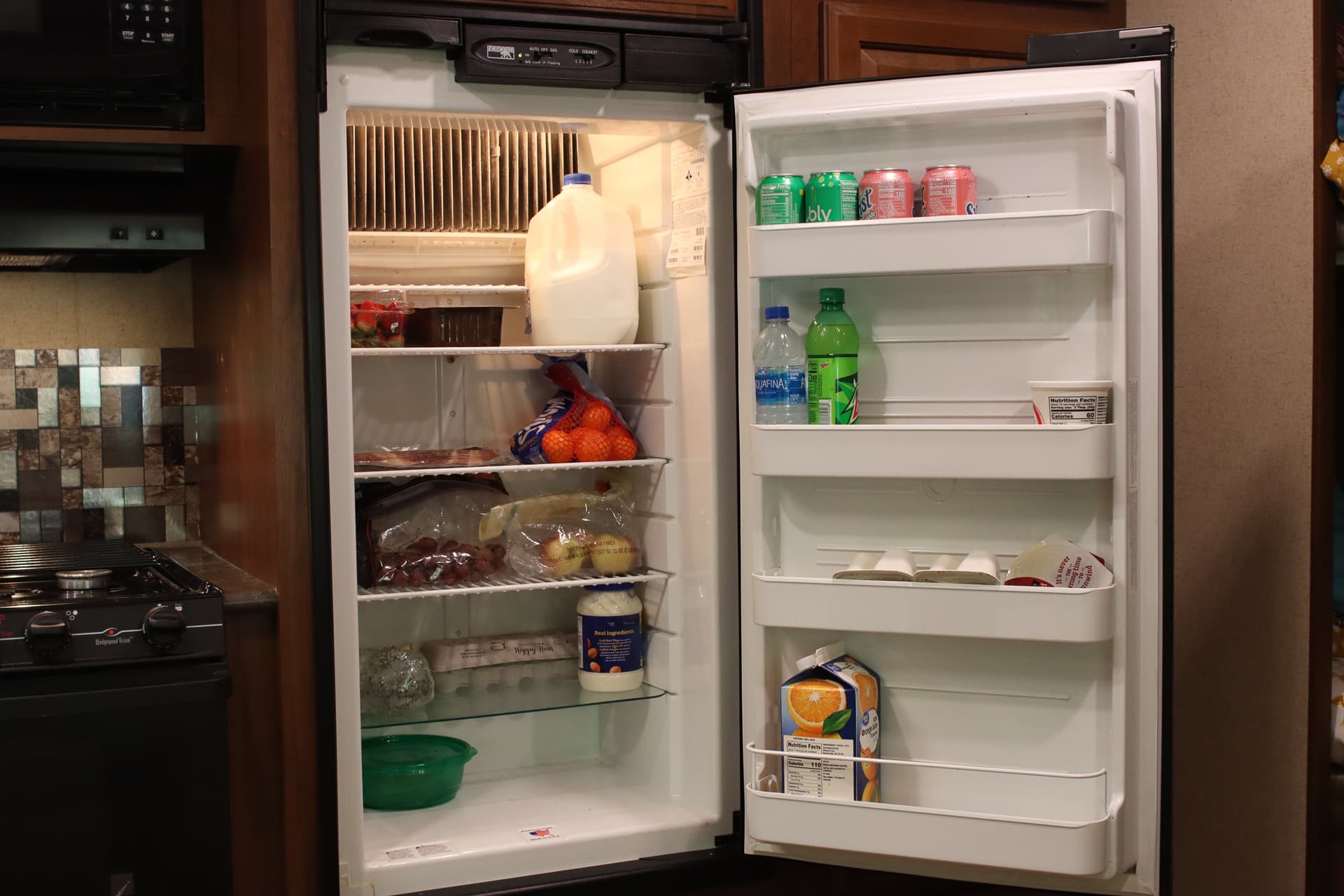

Articles
How Does RV Refrigerator Work
Modified: January 19, 2024
Learn how RV refrigerators work and stay cool on your next camping trip. Read our informative articles on RV refrigeration and keep your food fresh while on the road.
(Many of the links in this article redirect to a specific reviewed product. Your purchase of these products through affiliate links helps to generate commission for Storables.com, at no extra cost. Learn more)
Introduction
When it comes to enjoying the great outdoors, one of the essential components of any RV is a reliable refrigerator. Whether you’re embarking on a weekend getaway or a month-long road trip, having a functioning refrigerator in your RV is crucial for preserving food, keeping beverages chilled, and ensuring a comfortable and convenient journey.
In this article, we will delve into the inner workings of an RV refrigerator and explore how it functions to keep your perishable items fresh while you’re on the road. Understanding the basic components, absorption refrigeration cycle, heat removal process, and temperature regulation mechanism will help you make the most of your RV refrigerator and troubleshoot common issues that may arise.
So, let’s open the doors and examine the fascinating world of RV refrigeration!
Key Takeaways:
- Understanding the inner workings of an RV refrigerator, including the absorption refrigeration cycle and heat removal process, empowers RV owners to troubleshoot issues and make informed decisions about powering their refrigerator.
- Regular maintenance and care, such as cleaning, checking door seals, and monitoring ventilation, are essential for ensuring the longevity and optimal performance of an RV refrigerator, enhancing the overall RV experience.
Read more: How Does A Rv Toilet Work
Basic Components of an RV Refrigerator
An RV refrigerator may seem like a simple appliance, but it is composed of several crucial components that work together to provide efficient cooling. Here are the basic components of an RV refrigerator:
- Evaporator: This is the part of the refrigerator responsible for absorbing heat from the inside and cooling the internal space.
- Condenser: The condenser is responsible for releasing the heat that has been absorbed from the inside. It is usually located at the back of the refrigerator and dissipates the heat to the outside environment.
- Compressor: The compressor is the heart of the refrigeration system. It compresses the refrigerant, a special liquid or gas, and circulates it through the system to facilitate cooling.
- Expansion valve: The expansion valve plays a crucial role in regulating the flow of refrigerant through the system. It controls the pressure and temperature of the refrigerant, allowing it to evaporate and absorb heat from the inside of the refrigerator.
- Thermostat: The thermostat serves as the control panel for the refrigerator, allowing the user to set the desired temperature. It senses the temperature inside the refrigerator and sends a signal to the compressor to start or stop as needed to maintain the desired temperature.
- Door seals: The door seals ensure that the refrigerator remains airtight when closed. They prevent cold air from escaping and warm air from entering, thus maintaining the internal temperature.
- Electrical components: An RV refrigerator is powered by electricity, and it requires a power source to operate. In addition to the compressor, there are various electrical components such as switches, relays, and wiring that allow the refrigerator to function properly.
These are the fundamental components that make up an RV refrigerator. Each component plays a vital role in the refrigeration process, ensuring that your food stays fresh and cool throughout your travels.
Absorption Refrigeration Cycle
The absorption refrigeration cycle is the key mechanism behind the cooling process in an RV refrigerator. Unlike traditional compression refrigeration systems found in household fridges, RV refrigerators use an absorption system to achieve cooling. Let’s explore the four stages of the absorption refrigeration cycle:
- Evaporation: The process begins with the evaporation of a mixture of water and ammonia called the refrigerant. The heat from the internal space of the refrigerator causes the refrigerant to evaporate, absorbing heat and cooling the interior.
- Compression: Once the refrigerant has evaporated, it enters the compressor. However, unlike compression refrigeration cycles, the compressor in an absorption system is replaced by an absorber and generator unit. This unit uses heat from the RV’s propane burner to separate the ammonia from the water, creating a high-pressure, high-temperature gas.
- Condensation: In this stage, the high-pressure gas passes through the condenser coils located at the back of the refrigerator. As the refrigerant condenses, it releases the heat absorbed from the interior, and the temperature decreases.
- Expansion: After the refrigerant has gone through condensation, it enters the expansion valve. The valve controls the flow of the refrigerant and reduces its pressure, allowing it to expand and evaporate once again. This evaporation process absorbs heat from the interior, completing the refrigeration cycle.
The absorption refrigeration cycle operates based on the principle of heat flow and phase changes of the refrigerant. By using a combination of heat sources, including propane, electricity, and sometimes even solar power, the absorption system efficiently cools the interior of the RV refrigerator without the need for a traditional compressor.
Understanding the absorption refrigeration cycle helps us appreciate the ingenuity and efficiency behind RV refrigerator systems. By harnessing the power of thermal energy, these refrigerators provide a reliable cooling solution for your RV adventures.
How Heat is Removed in an RV Refrigerator
One of the key processes that make an RV refrigerator function efficiently is the removal of heat from the interior. Unlike household refrigerators that rely on electric-powered compressors, RV refrigerators utilize alternative methods to dissipate heat. Let’s take a closer look at how heat is removed in an RV refrigerator:
1. Heat Exchange: The heat inside the refrigerator is absorbed by the evaporator, which is located in the freezer compartment. As the refrigerant vaporizes, it absorbs heat, causing the interior temperature to decrease. This heat exchange process occurs continuously as the refrigerator cycles on and off to maintain the desired temperature.
2. Heat Dissipation: The next step involves dissipating the heat that has been absorbed from the refrigerator’s interior. In an RV refrigerator, this is achieved through a combination of natural convection and the use of external cooling units.
– Natural Convection: RV refrigerators are equipped with a series of condenser coils located at the back of the unit. These coils release the heat absorbed from the interior into the surrounding air through a process known as natural convection. As the hot refrigerant passes through the coils, the cool air outside the refrigerator absorbs the heat, allowing it to escape.
– External Cooling Units: In some cases, RV refrigerators may also feature external cooling units, such as ventilation fans or auxiliary cooling systems, to assist in heat dissipation. These units help enhance air circulation and expel the heat more efficiently, especially in hotter climates or when the refrigerator is operating in a confined space.
3. Ventilation: Proper ventilation is crucial for effective heat removal in an RV refrigerator. Adequate airflow around the condenser coils and proper ventilation of the external cooling units help prevent the buildup of heat and maintain optimal cooling performance. It’s important to ensure that the refrigerator vents are clear of obstructions and that there is sufficient space around the unit for air circulation.
4. Energy Source: It’s worth noting that the choice of energy source for an RV refrigerator can also impact heat removal. RV refrigerators can be powered by electricity, propane, or a combination of both. Propane-powered refrigerators utilize a flame to generate heat, which expels the absorbed heat more effectively. On the other hand, electric-powered units rely on the RV’s electrical system or external power sources for heat removal.
By efficiently removing heat from the interior and dissipating it through heat exchange, natural convection, and external cooling units, RV refrigerators can maintain a consistent and cool temperature for your food and beverages while you’re on the road.
Regulating Temperature in an RV Refrigerator
Regulating the temperature in an RV refrigerator is essential to ensure that your food stays fresh and properly preserved. While traditional household refrigerators often have digital temperature controls, RV refrigerators typically utilize a manual control system. Here’s how temperature regulation works in an RV refrigerator:
1. Thermostat: The thermostat is the primary component responsible for regulating the temperature inside the refrigerator. It is typically located in the interior compartment and allows you to adjust the temperature setting. The temperature range typically varies from around 32°F (0°C) to 50°F (10°C).
2. Cooling Cycle: When the temperature inside the refrigerator rises above the set threshold, the thermostat sends a signal to the refrigerator’s cooling system to activate. This initiates the cooling cycle, where the refrigerant evaporates, absorbs heat from the interior, and carries it to the condenser for dissipation.
3. Setpoint Calibration: Manual control systems in RV refrigerators often require periodic calibration to ensure accurate temperature regulation. This process involves adjusting the setpoint value on the thermostat to match a reliable thermometer inside the refrigerator. By calibrating the setpoint, you can ensure that the refrigerator maintains the desired temperature consistently.
4. Temperature Sensing: The thermostat senses the temperature inside the refrigerator using a temperature-sensitive bulb or probe. The bulb is typically placed near the cooling fins or evaporator to measure the air temperature. When the temperature rises above the desired range, the thermostat signals the cooling system to start, and when it reaches the set temperature, the system turns off.
5. Location Placement: Proper placement of items inside the refrigerator can also impact temperature regulation. It is advisable to avoid overpacking the refrigerator, as it can hinder proper airflow and lead to temperature inconsistencies. Ensure that there is sufficient space between items for cold air to circulate freely and evenly distribute the cooling effect.
6. Control Adjustments: When operating the RV refrigerator, you may need to make slight adjustments to the temperature control based on external factors such as ambient temperature and how often you open the refrigerator door. For example, in hotter climates, you might need to lower the temperature setting slightly to compensate for increased heat exposure.
By following these guidelines and understanding how the thermostat and cooling cycle work, you can effectively regulate the temperature in your RV refrigerator and ensure that your food and beverages are kept at the optimal temperature for safe storage and enjoyment.
Keep your RV refrigerator level to ensure proper functioning. The cooling system relies on gravity to circulate the refrigerant, so an unlevel unit can lead to inefficiency or even damage.
Read more: How Does Plumbing Work In An RV
Energy Sources for RV Refrigerators
RV refrigerators can be powered by various energy sources, providing flexibility and convenience for those traveling on the road. Let’s explore the different energy sources commonly used in RV refrigerators:
- Propane: Propane-powered refrigerators are a popular choice among RV owners. Propane is stored in a dedicated tank within the RV and is used to fuel the refrigerator’s burner. The heat produced by the propane flame is utilized in the absorption refrigeration cycle to cool the refrigerator. Propane is efficient and provides consistent cooling, making it ideal for boondocking or when electrical hookups are unavailable.
- Electricity: RV refrigerators can also be powered by electricity. When the RV is connected to an electrical hookup at a campground or RV park, the refrigerator can draw power directly from the electrical grid. This method is convenient and reliable, as long as a stable power source is available. Electric-powered refrigerators are energy-efficient and do not require a constant supply of propane.
- Dual Power: Many modern RV refrigerators offer the option of dual power, which means they can operate on both propane and electricity. These refrigerators have automatic switching capabilities, allowing them to seamlessly switch between power sources based on availability. Dual power refrigerators provide flexibility and peace of mind, ensuring that your food stays cool regardless of the power source available.
- Solar Power: RV owners who prefer a sustainable and eco-friendly alternative can opt for solar-powered refrigerators. These refrigerators are designed to harness energy from solar panels mounted on the roof of the RV. The solar panels convert sunlight into electricity, which is used to power the refrigerator. Solar-powered refrigerators are ideal for off-grid adventures, as they provide a continuous supply of energy without the need for propane or electrical hookups.
- Generator: Some RV owners choose to power their refrigerators using a portable generator. A generator can provide the necessary electricity to run an electric-powered refrigerator or charge the RV’s battery, which in turn powers the refrigerator. While generators offer flexibility, they can be noisy and require regular fuel refills.
Each energy source for RV refrigerators has its advantages and considerations. Choosing the right energy source depends on your personal preferences, the duration of your trips, the availability of power sources, and your desire for sustainability and self-sufficiency.
By understanding the energy sources available for RV refrigerators, you can make an informed decision and ensure that your refrigerator operates effectively throughout your adventures on the road.
Common Issues and Troubleshooting Tips
While RV refrigerators are designed to be reliable, there may be times when you encounter issues that affect their performance. Here are some common problems and troubleshooting tips to help you address these issues:
- Temperature Fluctuations: If you notice that the temperature inside your RV refrigerator is fluctuating, it could be due to improper door seals or a problem with the thermostat. Check the door seals for any damage or gaps and replace them if necessary. Additionally, ensure that the refrigerator is level, as an uneven surface can affect cooling efficiency. If the problem persists, it may be a sign of a faulty thermostat that needs to be replaced.
- Frost Buildup: Excessive frost buildup inside the refrigerator can hinder cooling performance. Check the door seals to ensure they are sealing properly and not allowing warm air to enter. Additionally, avoid overpacking the refrigerator, as it can restrict airflow and lead to frost buildup. If frost continues to accumulate, manually defrost the refrigerator by turning it off, removing all items, and allowing the ice to melt completely.
- Strange Noises: Unusual noises coming from the refrigerator can be indicative of various issues. A vibrating or rattling noise may be due to loose components, such as the cooling fans or internal parts. Tighten any loose components to eliminate the noise. If you hear a gurgling sound, it may be normal as the refrigerant flows through the system. However, if the noise is excessively loud or persistent, it could be a sign of a refrigerant leak or a malfunctioning component, and it is recommended to seek professional assistance.
- Propane Ignition Issues: If you are using a propane-powered refrigerator and have trouble igniting the burner, it may be due to a lack of propane supply or a clogged burner. Ensure that there is sufficient propane in the tank and check for any blockages in the burner or propane lines. Keeping the burner clean and free of debris or soot buildup can help maintain a consistent flame and improve ignition performance.
- Electrical Malfunctions: If you are experiencing electrical issues with your RV refrigerator, check the circuit breaker or fuse panel to ensure that the refrigerator’s circuit is not tripped or blown. Inspect the power cord for any damage or loose connections. If the refrigerator is not receiving power, it may indicate a problem with the electrical system of the RV or a faulty thermostat or control board. In such cases, it is advisable to consult a professional for further diagnosis and repair.
Remember, proper maintenance and regular inspection of your RV refrigerator can help prevent most common issues. Familiarize yourself with the owner’s manual for specific troubleshooting steps and safety guidelines. When in doubt or if the issue persists, it is always recommended to consult a certified RV technician for professional assistance.
By addressing these common issues and implementing the troubleshooting tips provided, you can ensure that your RV refrigerator functions optimally throughout your travels.
Maintenance and Care for RV Refrigerators
Maintaining and caring for your RV refrigerator is essential to ensure its longevity and proper functionality. By following these maintenance tips, you can keep your refrigerator in optimal condition during your adventures on the road:
- Clean the Interior: Regularly clean the interior of the refrigerator to remove spills, food residues, and odors. Use a mild detergent and warm water solution to wipe down the shelves, walls, and drawers. Avoid using abrasive cleaners or sharp objects that can damage the interior surfaces.
- Check Door Seals: Inspect the door seals regularly for any signs of wear, gaps, or damage. Properly sealing doors are crucial for maintaining temperature and energy efficiency. Clean the seals with a damp cloth and ensure they are free from debris that could prevent a proper seal.
- Level the Refrigerator: Ensure that the RV refrigerator is leveled to prevent any performance issues. An unlevel refrigerator can affect cooling efficiency and cause doors to not close properly. Use a bubble level to check the refrigerator’s levelness and make adjustments as needed.
- Keep Vents Clear: Check the external vents of the refrigerator regularly and ensure they are clear of any obstructions such as debris, insects, or bird nests. Blocked vents can restrict airflow and impede the cooling process. Use a soft brush or compressed air to remove any debris from the vents.
- Monitor Ventilation: Allow proper ventilation around the refrigerator by ensuring there is sufficient space around the unit for air circulation. Avoid placing items on top of or in front of the vents, as this can hinder heat dissipation and affect cooling performance.
- Defrost Regularly: If your refrigerator has a manual defrost function, it is important to defrost it regularly to avoid excessive frost buildup. Follow the manufacturer’s instructions on how to properly defrost the unit. Excess frost can impact cooling efficiency and make it harder for the refrigerator to maintain the desired temperature.
- Check Propane Supply: If you have a propane-powered refrigerator, regularly check the propane supply to ensure there is enough fuel for the burner. Monitor the propane tank gauge or consider installing a propane level indicator to avoid running out of fuel during your travels.
- Consult the Owner’s Manual: Familiarize yourself with the manufacturer’s recommendations and guidelines specific to your RV refrigerator. The owner’s manual provides valuable information on maintenance procedures, troubleshooting steps, and safety precautions. Consult the manual for any specific care instructions or recommendations.
By following these maintenance and care tips, you can ensure that your RV refrigerator operates efficiently and provides reliable cooling throughout your trips. Regular inspections, cleaning, and proper upkeep will help extend the lifespan of your refrigerator and enhance your overall RV experience.
Conclusion
An RV refrigerator is a vital component of any RV, ensuring that your food stays fresh and your beverages remain chilled while you embark on memorable adventures on the road. Understanding how an RV refrigerator works and how to maintain and troubleshoot common issues can greatly enhance your overall RV experience.
In this article, we explored the basic components of an RV refrigerator, including the evaporator, condenser, compressor, expansion valve, thermostat, door seals, and electrical components. We also delved into the absorption refrigeration cycle, which is the key mechanism behind cooling in an RV refrigerator. By comprehending the process of heat removal, temperature regulation, and the different energy sources available, you can make informed decisions about powering your RV refrigerator.
Additionally, we discussed common issues that may arise with RV refrigerators, such as temperature fluctuations, frost buildup, strange noises, ignition problems, and electrical malfunctions. By following the troubleshooting tips provided, you can address these issues and ensure the efficient operation of your refrigerator.
Proper maintenance and care are crucial for the longevity and optimal performance of your RV refrigerator. From cleaning the interior, checking door seals, and maintaining ventilation to defrosting regularly and monitoring the propane supply, following maintenance guidelines will help keep your refrigerator in top shape.
Remember to consult the owner’s manual specific to your RV refrigerator for detailed instructions and recommendations. If you encounter persistent issues or need professional assistance, it is always advisable to seek the help of a certified RV technician.
By incorporating these insights and taking proactive steps to maintain and care for your RV refrigerator, you can ensure that your food stays fresh, your beverages stay cool, and your camping adventures are enjoyable and worry-free.
Frequently Asked Questions about How Does RV Refrigerator Work
Was this page helpful?
At Storables.com, we guarantee accurate and reliable information. Our content, validated by Expert Board Contributors, is crafted following stringent Editorial Policies. We're committed to providing you with well-researched, expert-backed insights for all your informational needs.
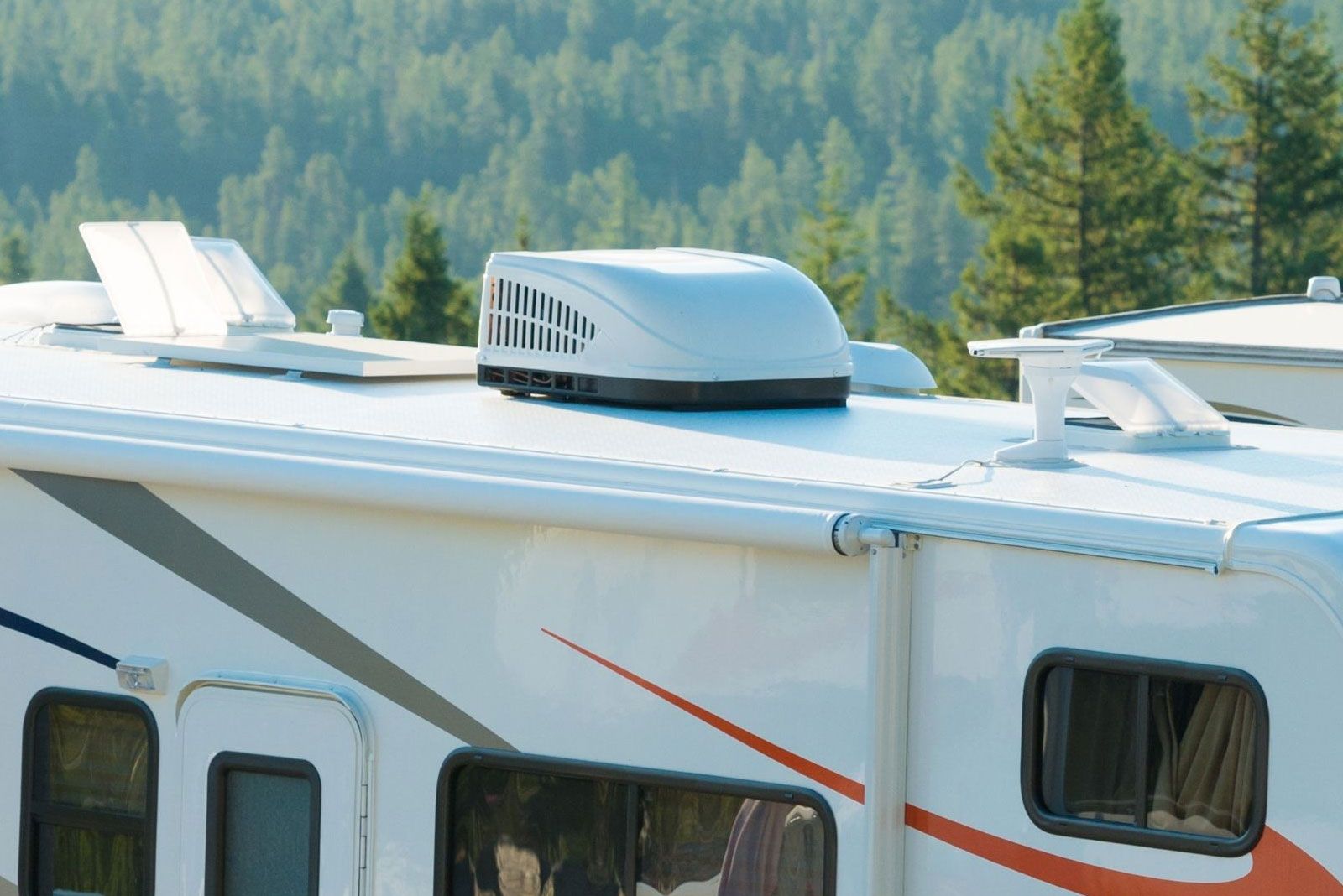

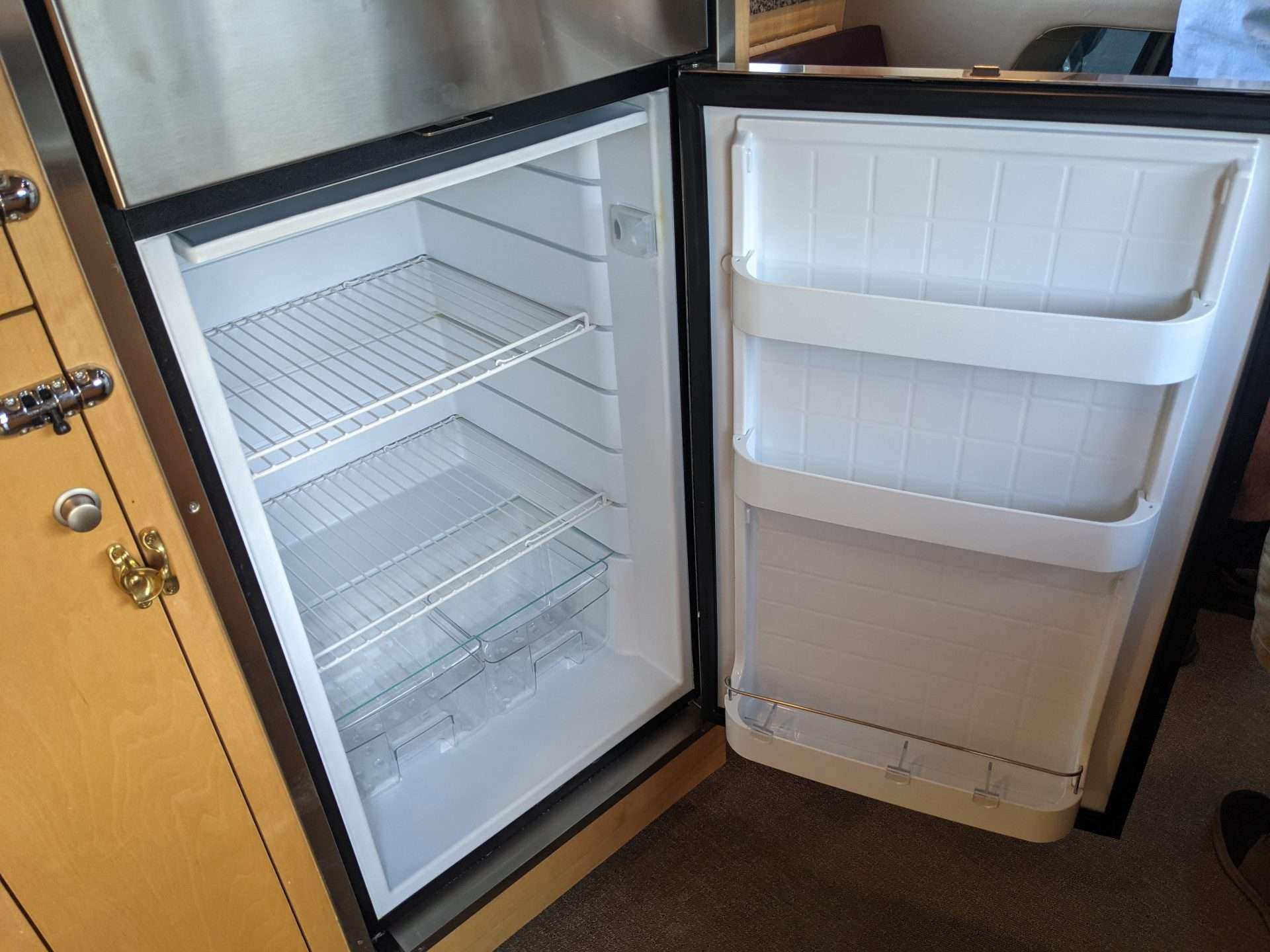
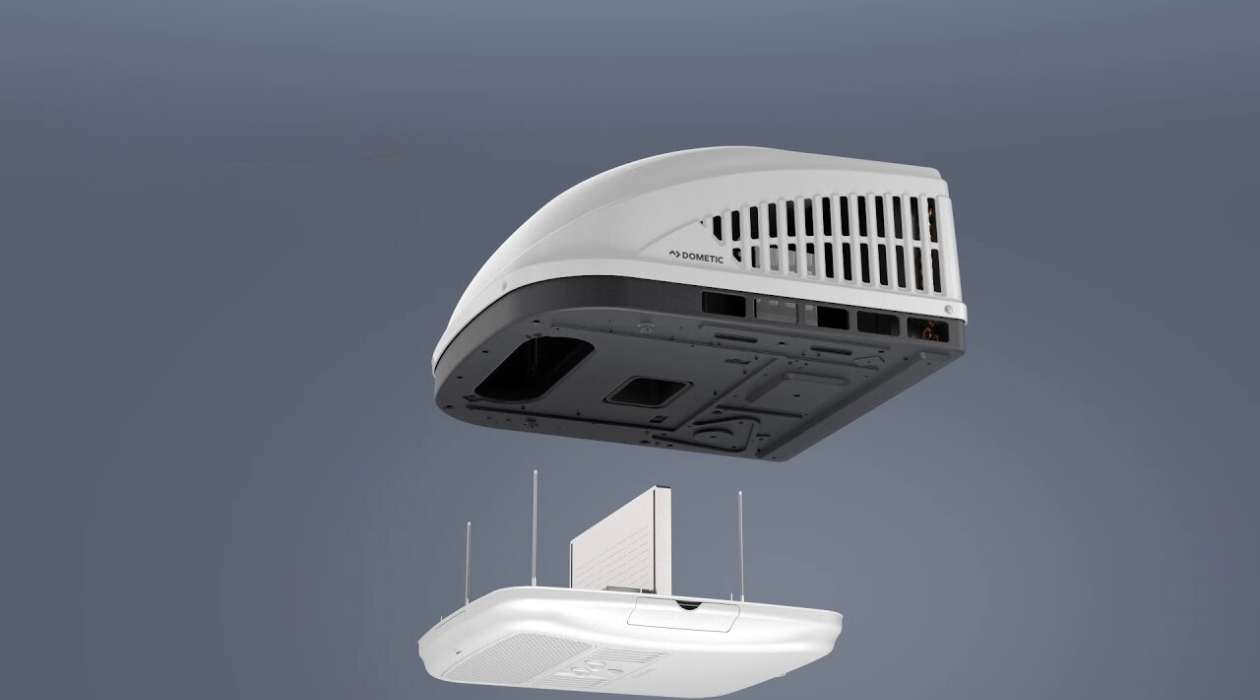
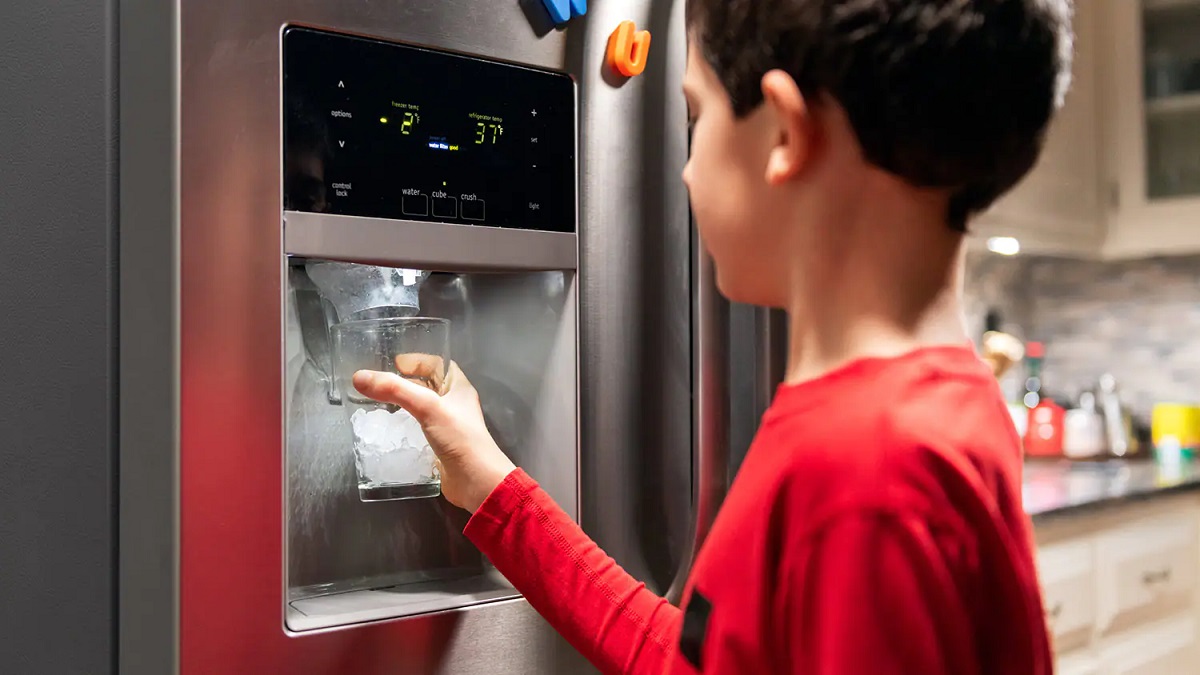
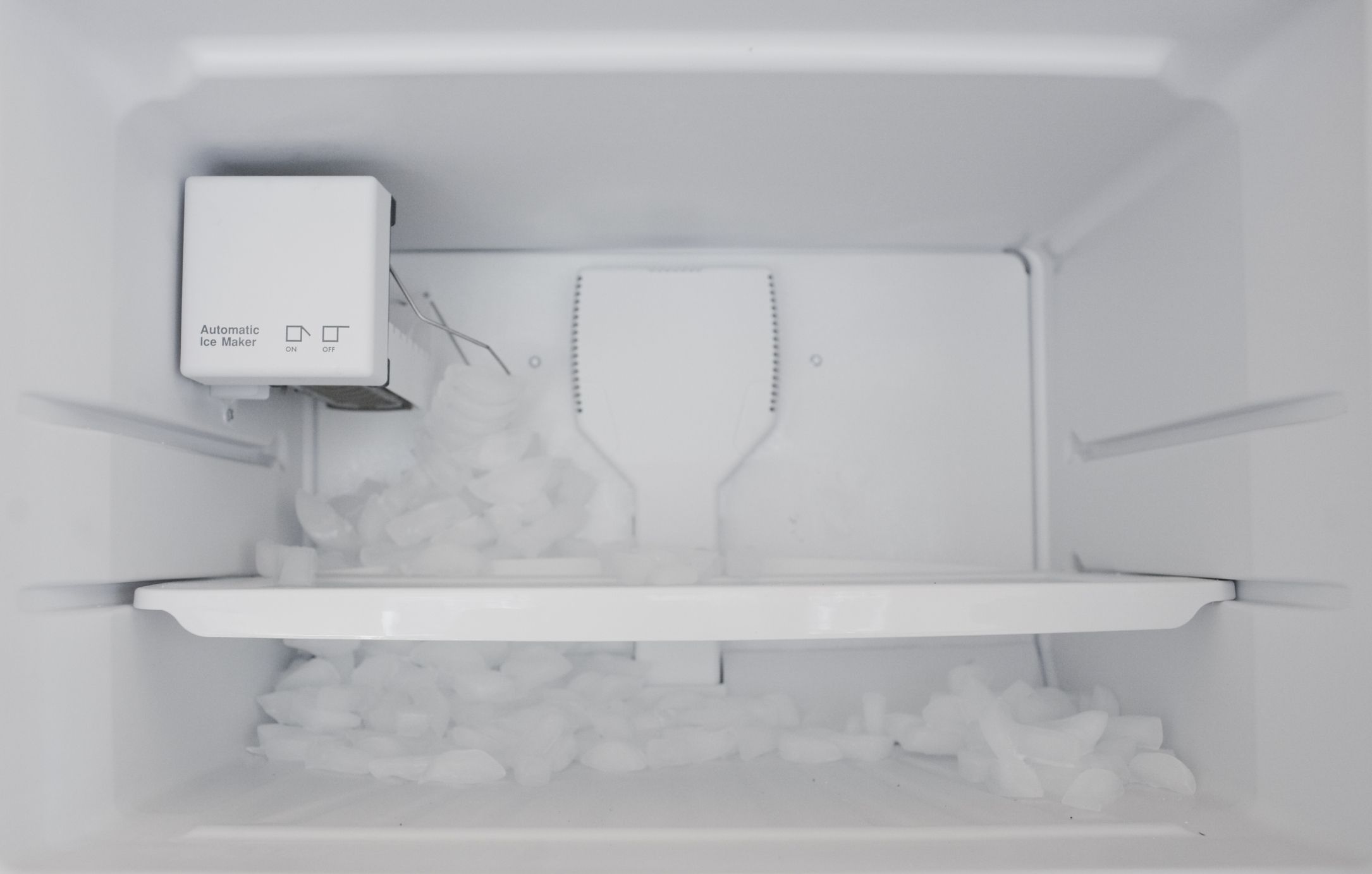
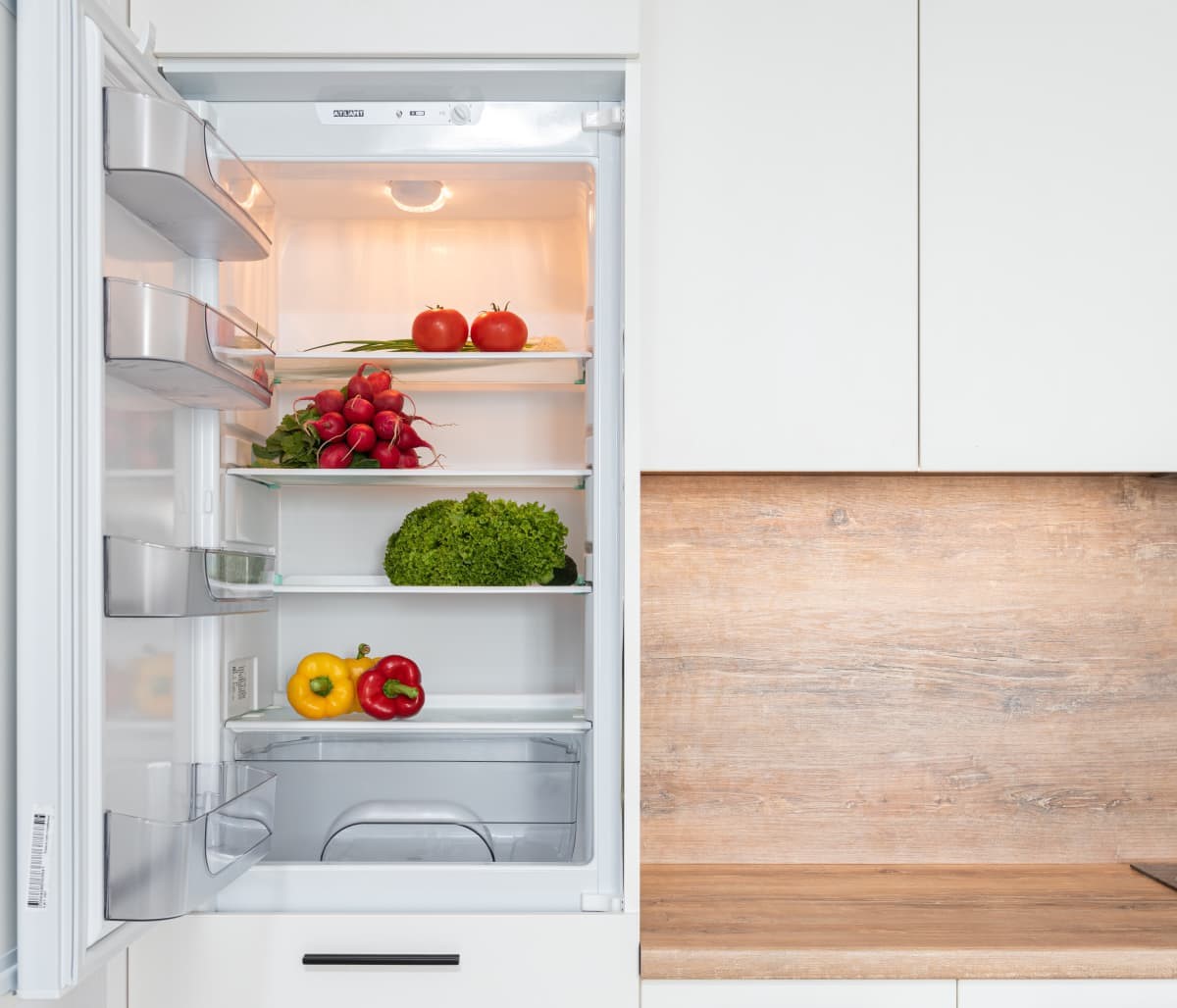
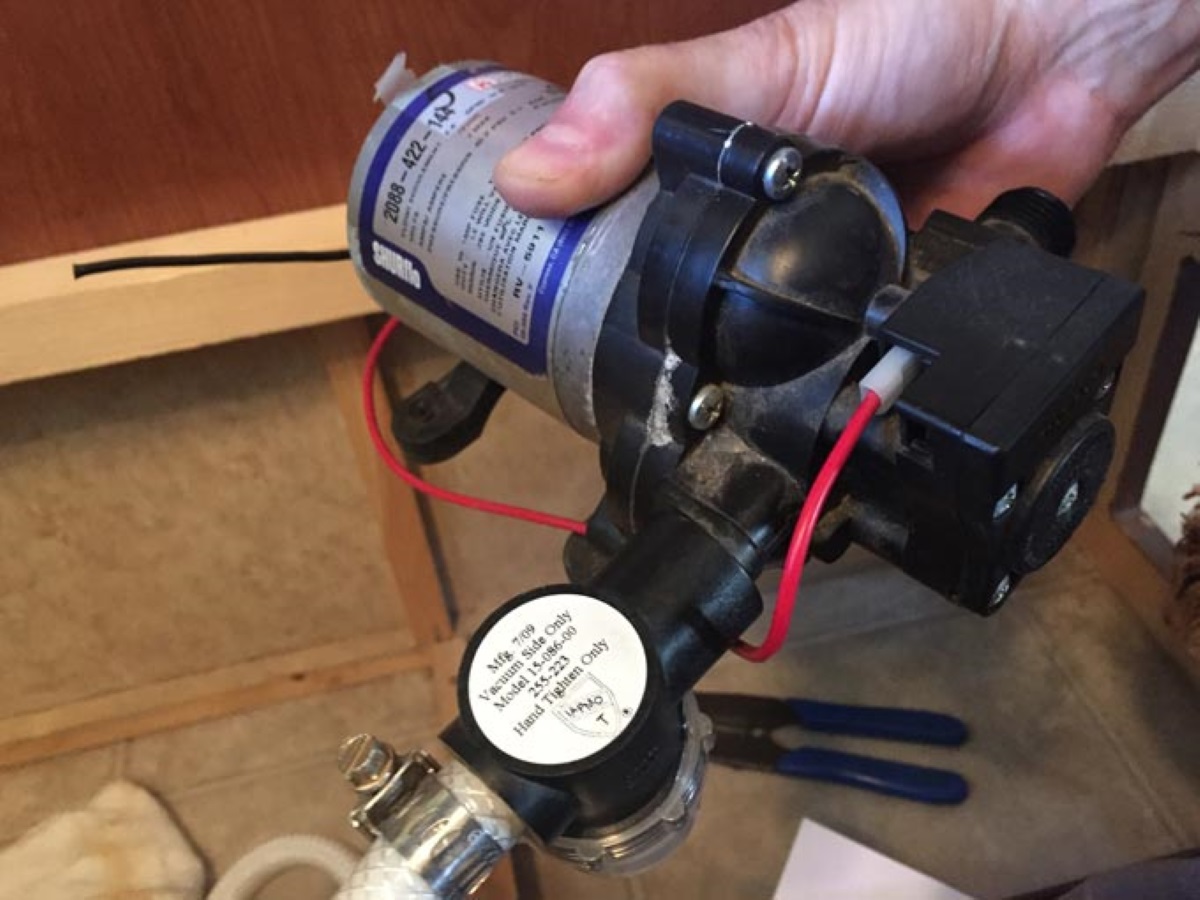
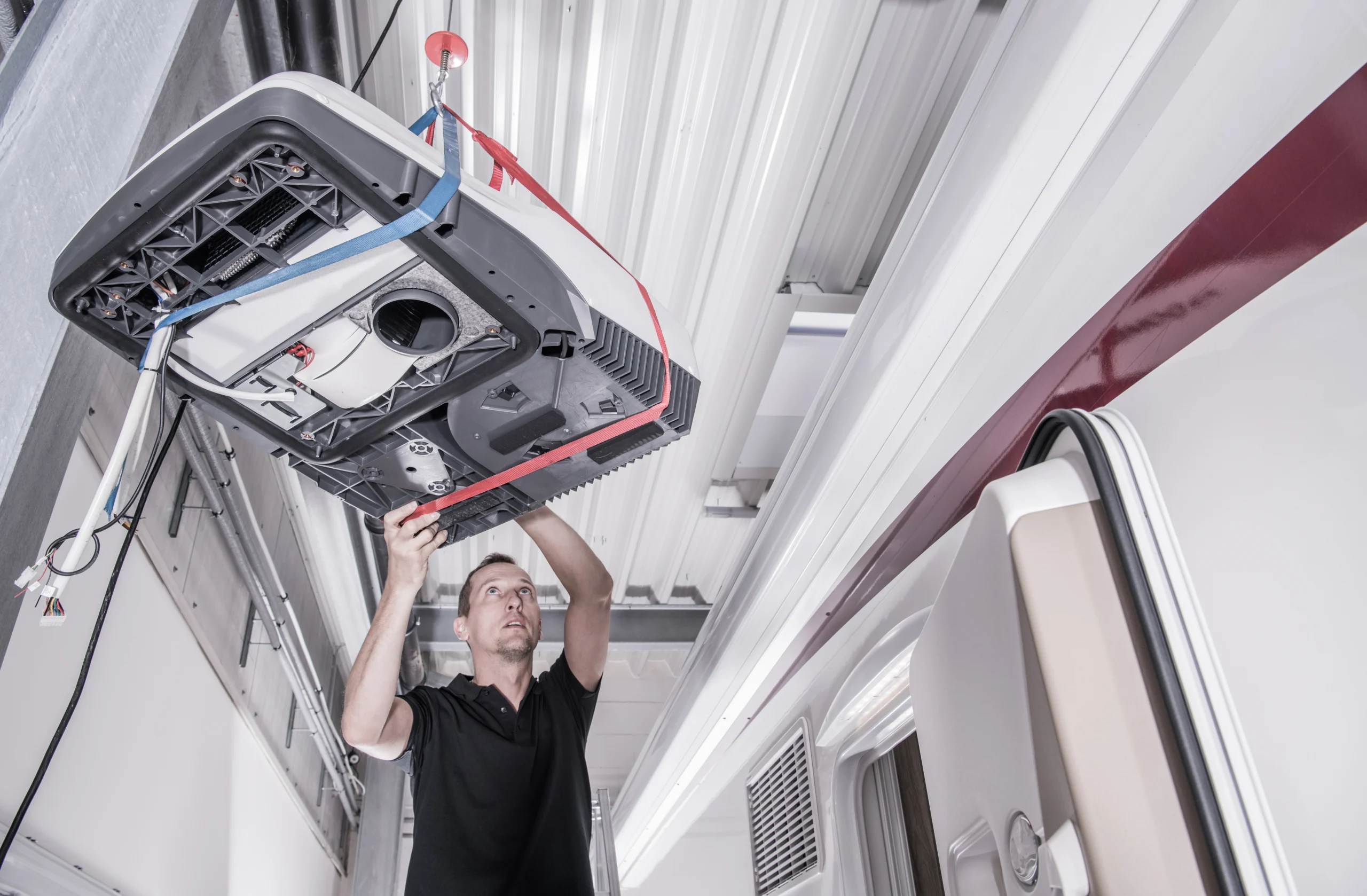
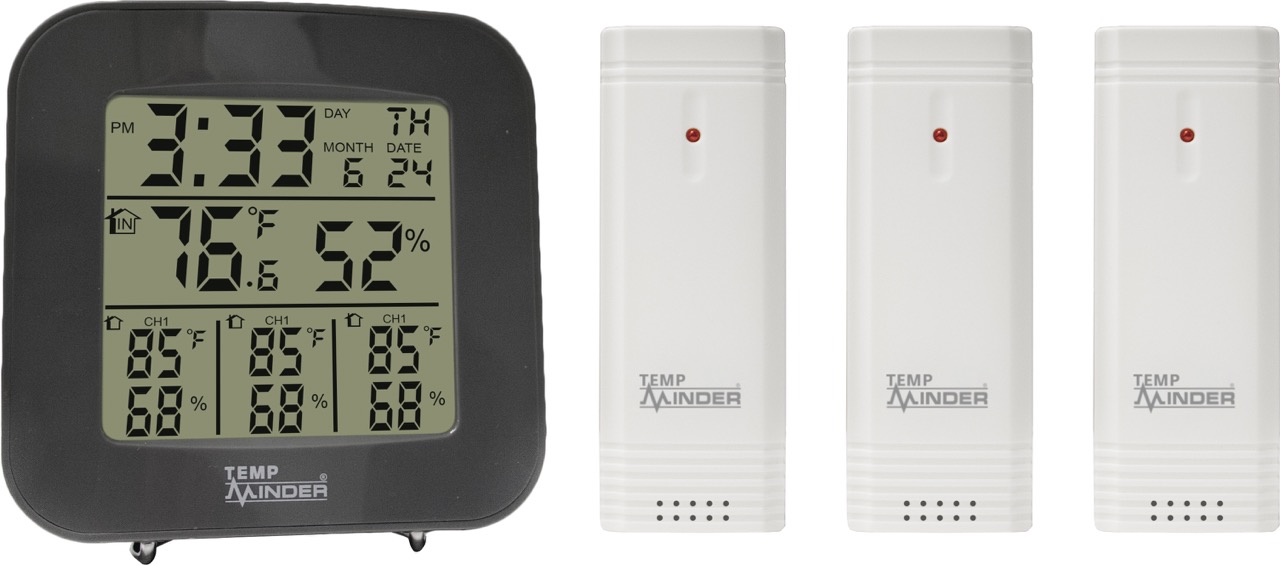
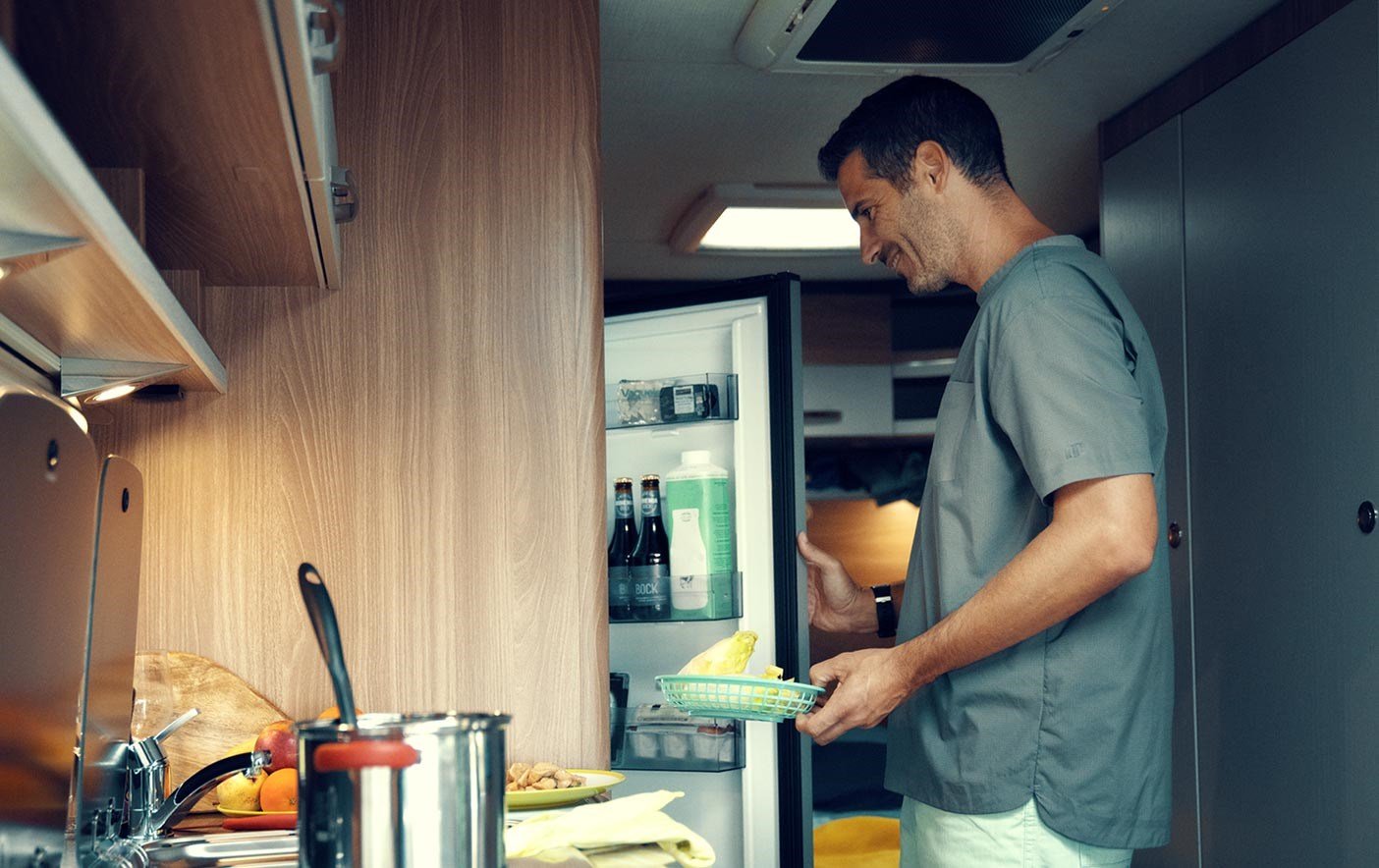
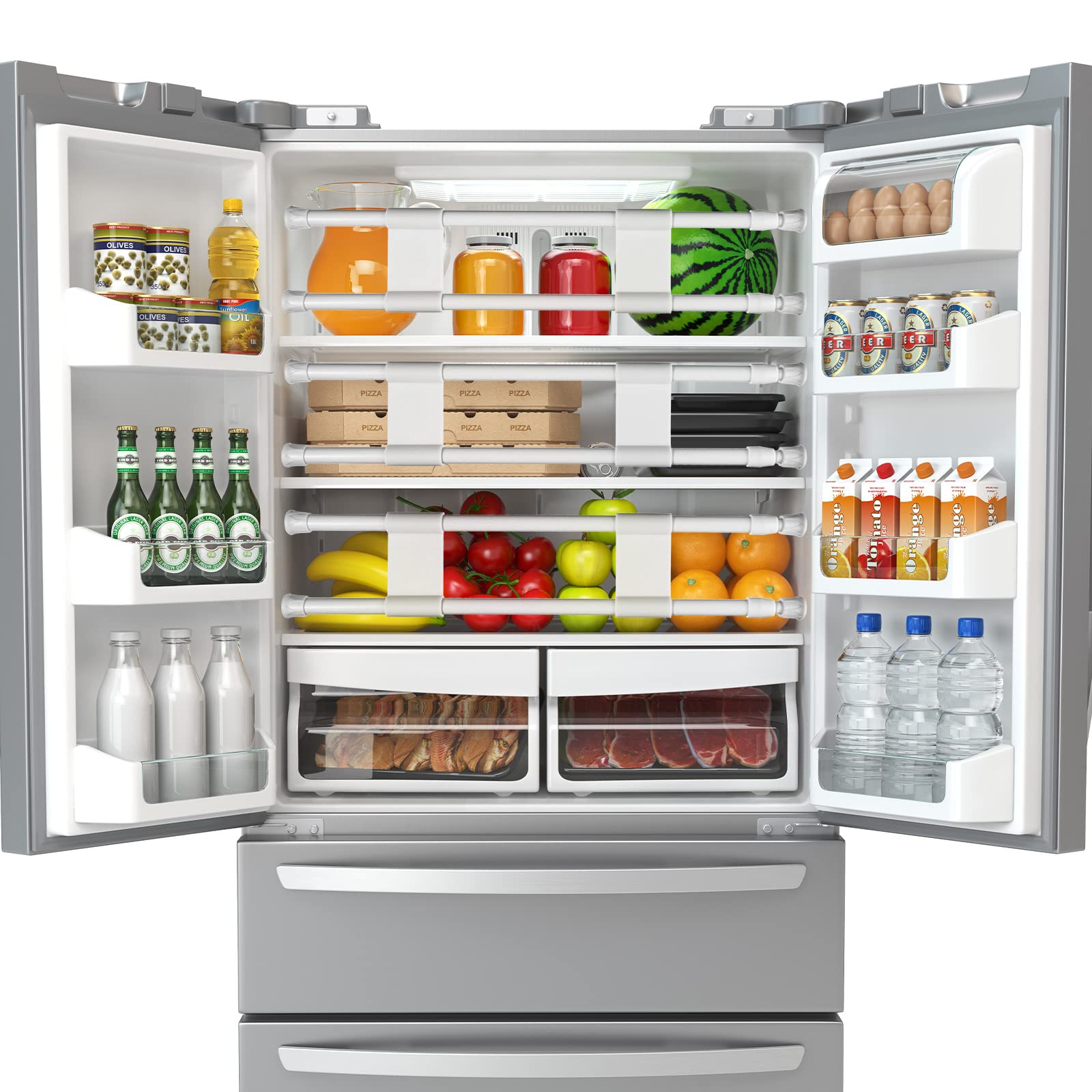
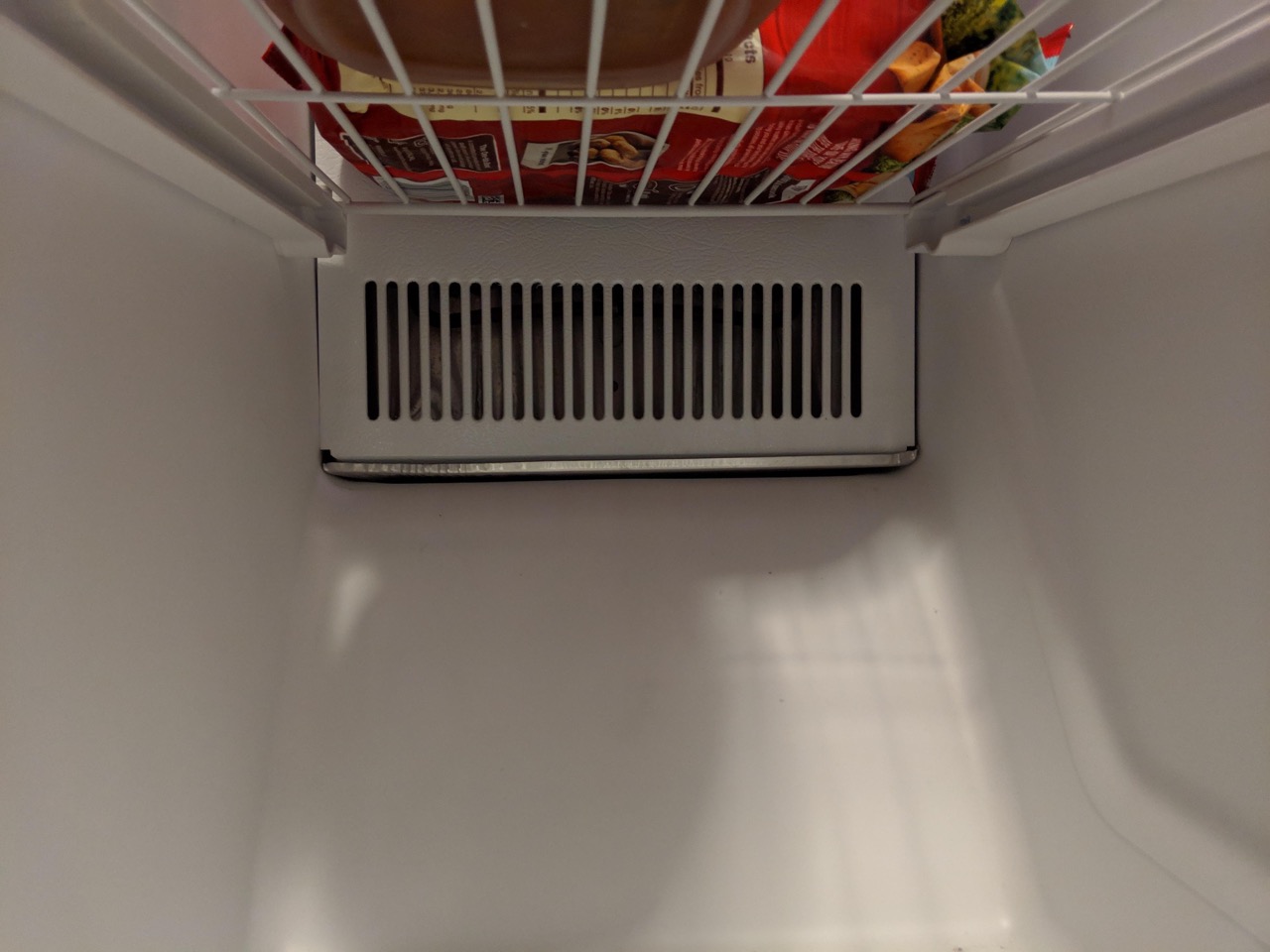
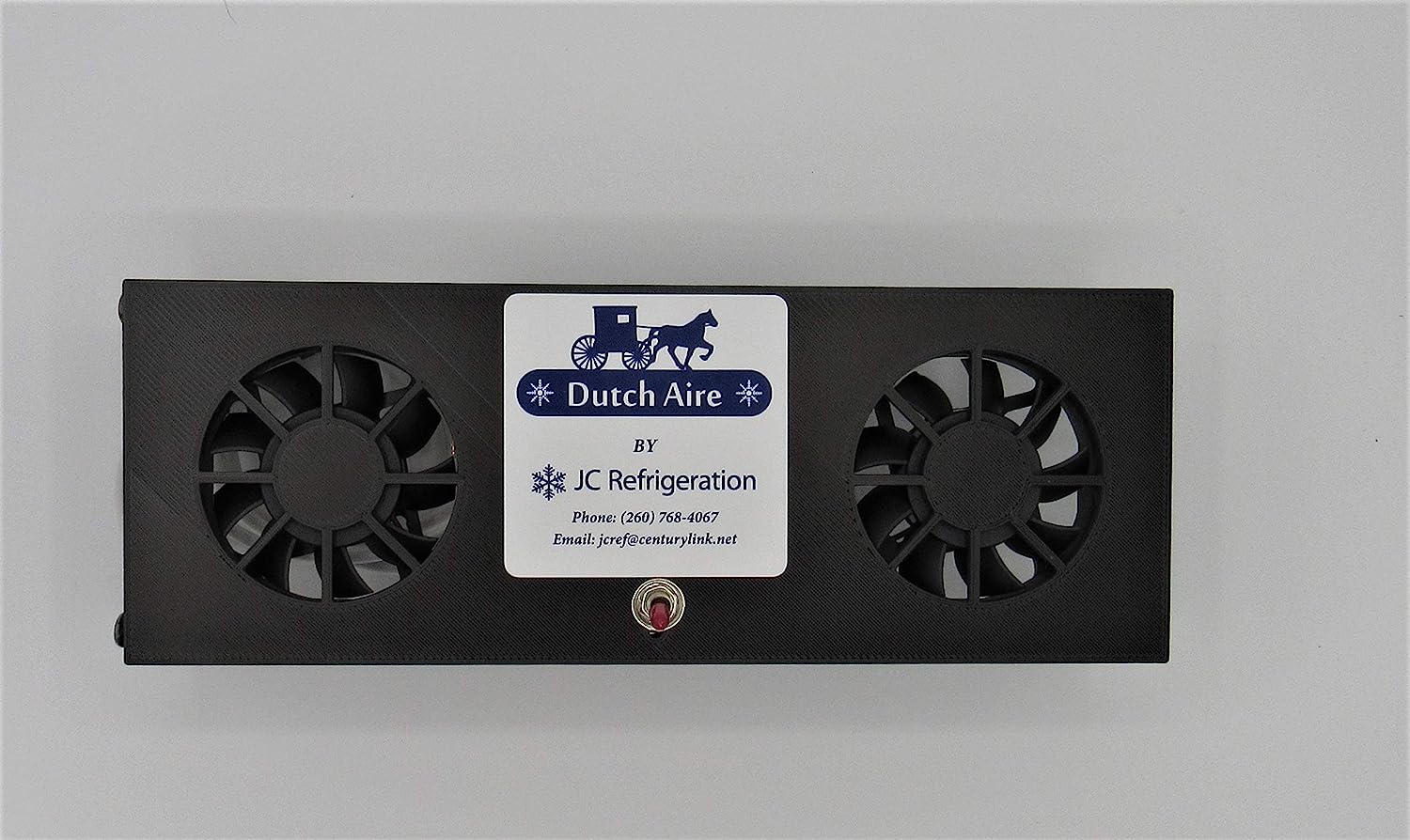

0 thoughts on “How Does RV Refrigerator Work”